Last week was a rare opportunity to go on a tanseki with the editor of Aiseki Mr. Kengo Tatehata. As I understand it, Nina and Larry Ragle arranged this trip for Mr. Tatehata and Wil to visit both Southern and Northern California. I believe they visited the Kern River in Southern California. For the trip up North, Hideko Metaxas along with Mas Nakajima arranged that portion of the trip. The others in attendance are from the San Francisco Suiseki Kai.
We met at the Super 8 in Willits, CA and had dinner followed by about 2 hours of questions and answers. It was a unique experience for many of us as we had the opportunity to hear opinions from Japan on stone collecting.
The following are a few memorable comments by Mr. Tatehata with many thanks for Wil acting for providing the translation service.
- There are approximately 450 stone clubs in Japan.
- Most clubs adhere to their own set of rules in terms of what they appreciate in the stone.
- Most clubs are regional in nature with the exception of the Nippon Suiseki Association which has ~6 regional clubs throughout Japan.
- Mr. Tatehata was surprised at the passion shown by our club towards suiseki. He indicated that in Japan the attitude was a bit more relaxed. He really enjoyed the passion being shown.
- We talked about stone photography (Mr. Tatehata is a member of the Japan Professional Photographers Society) and his setup. As he travels almost weekly to photograph stones, he indicated that most of his setups use a white background with two lights. However, his studio setup is more complex, as we thought it might, with backgrounds varying in color in order to show the stone at its best along with multiple lights.
- We spoke fervently about how to increase the exposure to suiseki. Mr. Tatehata spoke of how it was primarily a “older” persons hobby in Japan which coincides with that in the U.S. We laughed about this and the reasons why we thought it was that way. We discussed how we might bring others into the hobby that many of us love.
So the next morning promptly at 8am we headed out to the Eel River where the photo above was taken. The following photos were taken throughout the day. We collected for approximately 4 hours. It was a beautiful day but by 1pm it was nearly 102 degrees – it was hot!
A beautifully clear day and an amazing stone field in the distance. More on how amazing this location is later in the post.
So it was just before 9am as we began our stone hunt. No matter how many times I have been stone collecting there is much the same excitement as when I head into the stream to fly-fish. One just never knows what one will find. Click the photo for a larger version.
On the drive up to the river, Mr. Tatehata and Wil and I were discussing the tanseki trip. Mr. Tatehata described how much he had heard about the Eel River and he spoke of how much he hoped to find several good representative stones to take back to Japan. His favorite stone he collected this day was the one on the right.
As he and I were talking by the river’s edge, I noticed he had gathered up about 15 stones in a tight circle. I asked him what he was doing and he said he was going to photograph this group as it represented the variety of stones found that day. It was an amazing array of colors: light green, dark green, nearly black, dark blue, red, yellow, white, etc. Of course, I was so busy that I didn’t take a photograph (how dumb of me) but perhaps it was because I had a 60 pound stone in my backpack!
His comment to me was really insightful. He indicated that there simply isn’t a river like the Eel in Japan. He said that most rivers in Japan tended to have very similar stones in color. This is why it is often easy to identify a stone from the Kamogawa, Setagawa, Sado Island, etc. He was amazed at the variety of color in stones contained in this one river; and mind you we hunted in an area less than 500 meters long.
A very nice stone. It was so bright it was difficult to take this photo. Note however that the top of the stone is an even darker green that looks like it had been polished by the river. Too see more click the above photo.
Also a very nice stone approximately 7 inches across and 4.5 inches high. He indicated both could be displayed in a doban. I was glad to hear this as I saw this in both stones as well.
- Mr. Tatehata describing his stones and his view of the trip.
Mr. Tatehata declined reviewing any stone that was not his as he said that it wasn’t common for others to discuss the quality of someone’s stone in Japan. I kinda like that style at least in public anyway. In private we discussed the two stones I was taking home, a future post, and he spoke to me about which stone he liked the best. I appreciated his input.
Let me also say, that I always enjoy collecting with Mas as well. He is an invaluable resource for evaluating stones that I pick up in the field. On many occasions I have taken a stone to him and he shows me something in the stone that I have simply missed. Thanks Mas for being so willing to share what you so readily see.
It was a great day and I believe everyone took home a stone.


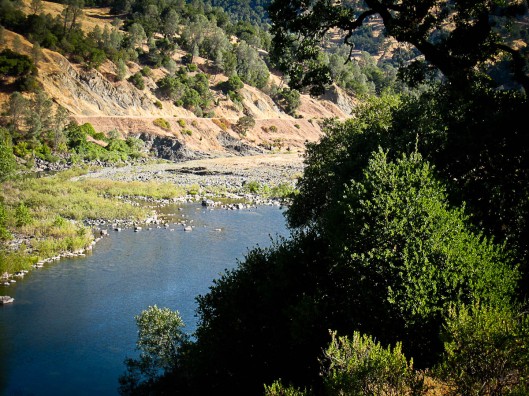
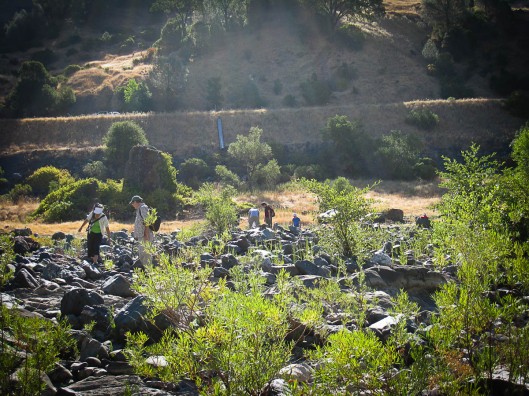
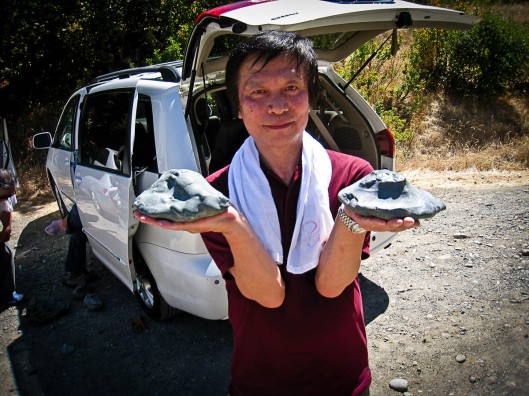
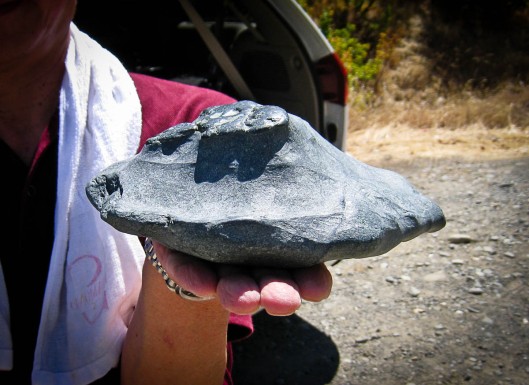
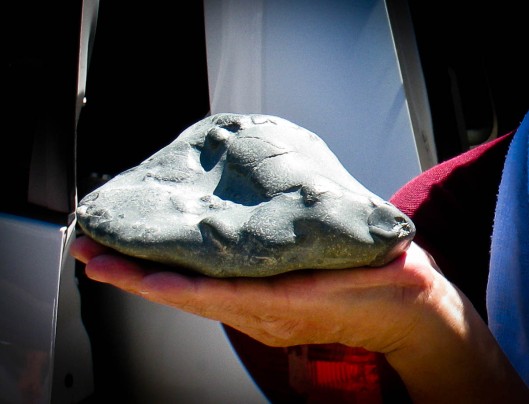
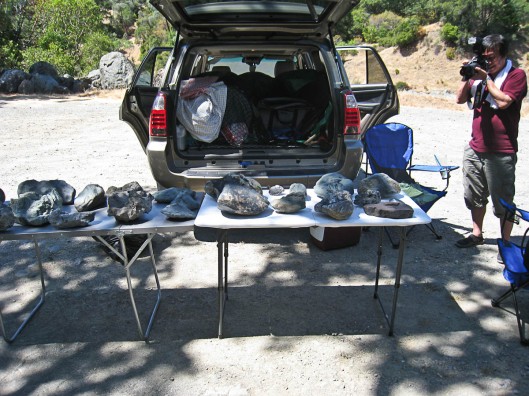
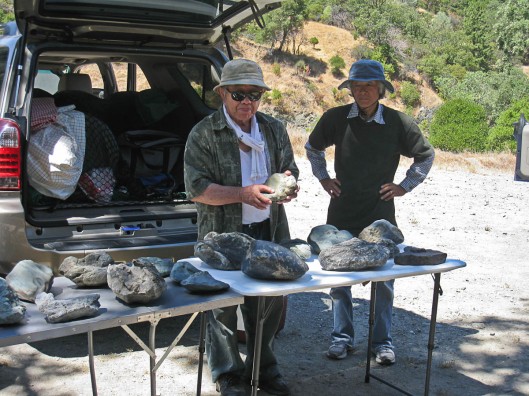
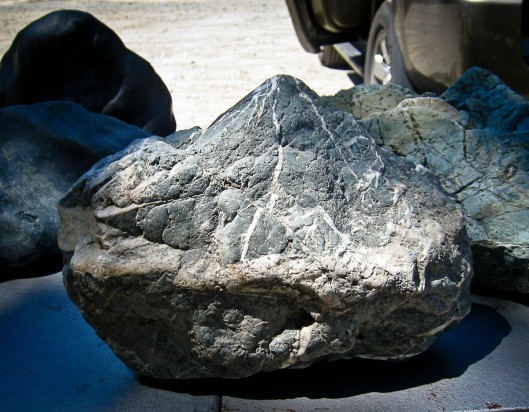
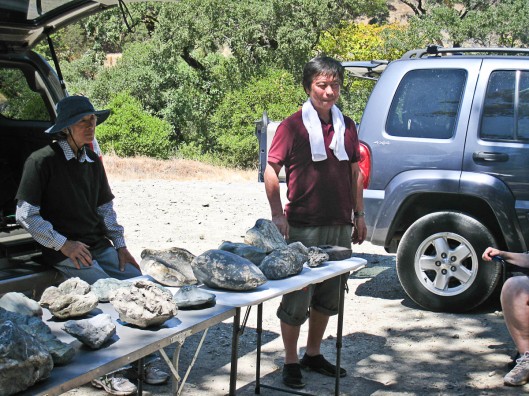
Hiya Sam! I thought Wil found a stone that he liked? But it was kind of big so I guess he decided it wouldn’t fit in the carry-on 🙂 It was a nice day wasn’t it?
Hi Sam,
It is an interesting blog post you wrote.
I am writing a book of geology related to suiseki. So, I seek your permission to put your photos and description in my book. Please let me know when you agree.
Cheers, Yudi
Hello Yudi, please email me specific requests for which photos you are requesting and how attribution will be given in the book. Thanks! samedge at pacbell dot net.
Hi Sam, I interest photo number 3 (title The hunt begins!) and number 7 (Today’s stones that were heading to various homes) from a total of 10 photos. I will mention the photo from you (image courtesy of Sam Edge, 2012).
Thanks.